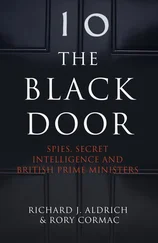The second Lincoln, ‘C’ (RF531), under the command of Flight Sergeant Peter Dunnell, was following along the same track, two hours behind. It also carried an important passenger, Squadron Leader Harold Fitz, who had just taken over as Commanding Officer of 3 Squadron and who had come along for the ride as co-pilot. Just after 1 p.m., near the air corridor that stretched across the Soviet Zone from Hamburg to Berlin, two more MiG-15s appeared. This time they opened fire. Although the Lincoln had strayed some way into the Soviet Zone, by the time it was fired on the crew had realised their error and retraced their steps. They were now just west of the River Elbe, inside the British Zone. The firing took place over the village of Bleckede, where ammunition belts from the MiGs were later recovered. The Lincoln entered a steep dive, still pursued by the MiGs, and broke up, with the main fuselage landing in a wood near Boizenburg, just inside the Soviet Zone on the eastern bank of the Elbe. Other parts of the aircraft, including the starboard wing, came down on Luneburg Heath, a British military exercise area fifteen miles south of Hamburg. 5
Of the seven crew, four were found dead inside the wreckage. Three of the crew had managed to bail out, but one parachute failed to open. The other two crew members seemed to parachute successfully, but several shocked German witnesses testified that one of the Soviet MiGs swooped low and strafed them with cannon fire. Wilma Muller, one of the witnesses, testified that one of the crew had a ‘perforated parachute’ as a result of being fired upon. Both crew members whose parachutes had opened died of terrible wounds shortly after landing. 6
The RAF concluded that the Lincoln had gone off course and strayed into Soviet airspace shortly after it entered the air corridor to Berlin. However, it was obvious that its intention was to head up one of the three twenty-mile-wide air corridors that connected the three sectors of Germany occupied by the West to Berlin. While the Soviets insisted that the British crew had fired first, it was soon proved beyond doubt that the Lincoln had been unarmed, since much of the firing mechanism from its turret guns was routinely removed on training sorties. However, the Foreign Office resisted the idea of pressing hard for compensation because inspection of the wreckage showed that the Lincoln was actually carrying some ammunition, even though it was unlikely that it had fired. ‘We might have to admit that the aircraft accidentally penetrated the Soviet Zone of Germany,’ it noted. Nevertheless, it was confident that, from where the cases from the Soviet cannon shells fell, the MiGs had downed the Lincoln over the British Zone. 7
British Members of Parliament were outraged. They pressed for compensation from the Soviets for the crew’s families, and were told by the Minister of State for Foreign Affairs, Selwyn Lloyd, that the British High Commissioner in Germany had been ordered to ‘demand’ adequate payment. Churchill was clearly animated about the matter, but behind the scenes officials were soft-pedalling. 8 High-level instructions were given to British representatives to ‘avoid post-mortems’, and instead to focus on talks that would avoid a repetition of the incident. 9 Three months after the event, Foreign Office officials urged, ‘We should be in no hurry to do anything,’ and were anxious to prevent the public from learning that the Soviets had refused compensation from the outset. 10 The bodies of the seven crew members who had fallen in the Soviet Zone were returned to RAF Celle, and eventually to their families. 11
While the Lincoln had not been on an intelligence flight, its progress was being carefully tracked by a British sigint unit on the ground at RAF Scharfoldendorf in the British Zone of Germany. The unit carefully transcribed the conversation between the MiG pilots and the Soviet ground controllers, which were ‘in clear’ voice communications. This sigint report was soon on the desk of the Prime Minister, and the unit received praise for catching the Soviets ‘red-handed’. The report made it clear that the Lincoln was shot down in cold blood, and led to Churchill’s bitter comments on the ‘wanton attack’ in the House of Commons. 12 It also helped to confirm that before turning around and retracing its steps, the Lincoln had in fact penetrated Soviet airspace ‘fairly deeply’. 13 Later, the families of the crew members asked why Churchill was so certain about the exact pattern of events, but of course the sigint aspect of his information could not be revealed to them. 14 Churchill ordered that in future all flights over Germany, including training flights, would not only carry ammunition but would also fly with guns ‘loaded and cocked’. In 1955 his successor, Anthony Eden, still required all training aircraft to carry ammunition when over Germany. 15
An agreement with the Soviets on air incidents was badly needed. As air historians have noted, the first half of 1953 was a period of high tension in Western Europe. Only a few days before the Lincoln incident, an American F-84 Thunderjet had been shot down by a MiG. A week later a British European Airways Viking airliner was strafed by MiGs while travelling down the Berlin Air Corridor, but managed to limp home. A fortnight after that an American bomber was attacked by MiG-15s over Germany, but repelled them with vigorous cannon fire. In the Far East, where the Korean War was drawing to a close, things were even worse. On 27 July, a few hours before the final armistice came into effect, an American F-86F Sabre pilot shot down a civilian Aeroflot Il-12 airliner, killing all twenty-one persons on board. The Americans and the Soviets engaged in a protracted argument as to whether the airliner was over North Korea or China when it was shot down. No one could disguise the fact that the debris came down in China. 16 Two days later, presumably in retaliation, the Soviets downed a US Air Force RB-50G Superfortress sigint reconnaissance aircraft near Vladivostok, with the loss of seventeen of the eighteen crew. 17 The RB-50G was a much faster version of the RB-29 Washingtons flown by the RAF’s 192 Squadron, but it had still not been able to escape. All NATO aircraft flying near the Inner German Border were now operating on a fully-armed ‘fire back’ basis. 18
Discussions between the four occupying powers over the RAF Lincoln did not go well. In 1945 the Allies had agreed that there would be three air corridors stretching from different points in the Western Zones of Germany across the Soviet Zone to Berlin, which was itself divided between the four powers. Sensibly, the Soviets suggested replacing the complex and confusing system of three different air corridors with a single wider corridor or ‘funnel’. The Allies refused, because although this solution would have been safer, each of the three corridors passed over a subject of ‘intelligence interest’. Sir Ivone Kirkpatrick, who represented the British, explained to officials in London:
The crux of the matter is really how much importance we attach to the intelligence interest. The Americans are at present very strong on this (they are particularly anxious to retain ability to watch the Fulda Gap), and have suggested to us privately that we are not attaching sufficient importance to intelligence interest in the Northern Corridor.
Negotiations were made more complex by the fact that the French, who also had a sector in Berlin, were ‘obviously’ not told about the intelligence issues during the negotiations. 19 The Americans later explained that the retention of the southern corridor was ‘an absolutely vital requirement’ for them, since what they needed above all was early warning of any concentration of forces signalling an impending Soviet attack. As well as the regular sigint flights that travelled down the corridors, the Americans were now using special aircraft equipped for lateral photography, claiming that the photographs were so good you could ‘see a golf ball on a tee at 40 miles’. 20 The Americans were ‘entirely rigid’ on intelligence interests being paramount. Accordingly, the negotiations foundered, and the existing system, with its three corridors, remained largely unchanged. 21
Читать дальше












